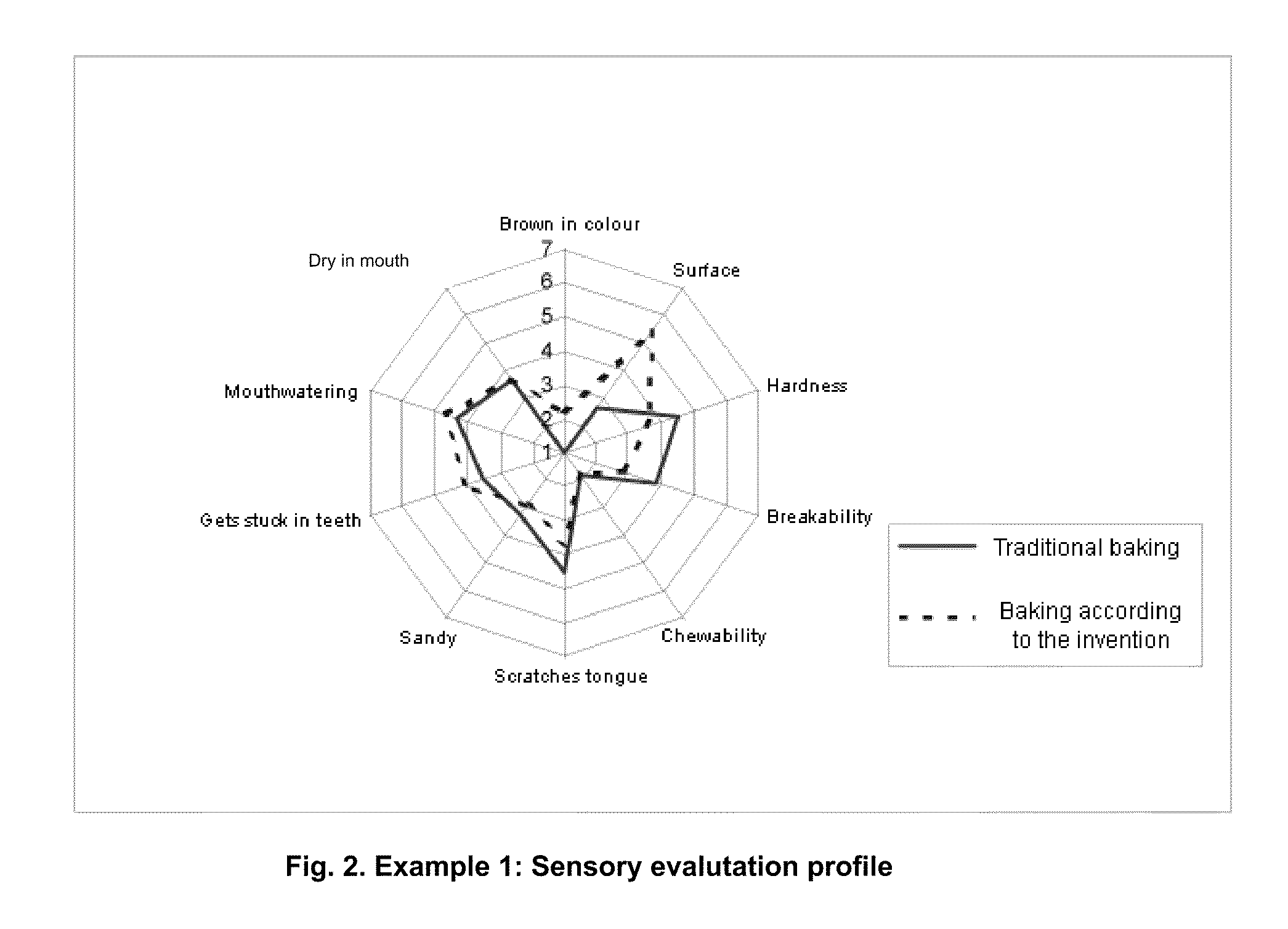Process for the Production of Biscuits Having Improved Organoleptic Properties
a technology of organoleptic properties and biscuits, which is applied in the field of biscuit production, can solve the problems of poor or even unacceptable organoleptic properties of shortbread biscuits, increased risk of cardiovascular diseases and/or negative health effects, and increased risk of obesity and diabetes
- Summary
- Abstract
- Description
- Claims
- Application Information
AI Technical Summary
Benefits of technology
Problems solved by technology
Method used
Image
Examples
example 1
Biscuit of Conventional Formulation for Shortbread Biscuit
[0095]A biscuit dough was prepared according to a recipe for traditional shortbread biscuits, as follows (Table 1):
TABLE 1Traditional shortbread biscuits recipeIngredients% (in weight per total weight)Type 0 flour56.00Sugar17.55Vegetable fats (palm oil)14.00Salt0.30Raising agents0.35Water6.80Eggs5.00Total100.00
[0096]The ingredients of the shortbread biscuit were kneaded according to traditional kneading methods in a planetary mixer with a mixing tool of the blade type, with the mixing of sugar and fat of the basic recipe until a homogenous mixture was obtained, completed with the addition, in subsequent steps, of the remaining ingredients.
[0097]The dough structured in this way was then formed into the final shape with rotary type systems.
[0098]The shortbread biscuit thus formed was then subjected, in one case, to traditional baking and, in the other case, to baking according to the process of the present invention, in order t...
examples 2-5
[0105]Doughs were prepared for the following biscuits according to the recipes of Table 4 below:
example 2
[0106]Low-calorie biscuit obtained by the reduction of the lipids content;
PUM
 Login to View More
Login to View More Abstract
Description
Claims
Application Information
 Login to View More
Login to View More - R&D
- Intellectual Property
- Life Sciences
- Materials
- Tech Scout
- Unparalleled Data Quality
- Higher Quality Content
- 60% Fewer Hallucinations
Browse by: Latest US Patents, China's latest patents, Technical Efficacy Thesaurus, Application Domain, Technology Topic, Popular Technical Reports.
© 2025 PatSnap. All rights reserved.Legal|Privacy policy|Modern Slavery Act Transparency Statement|Sitemap|About US| Contact US: help@patsnap.com



